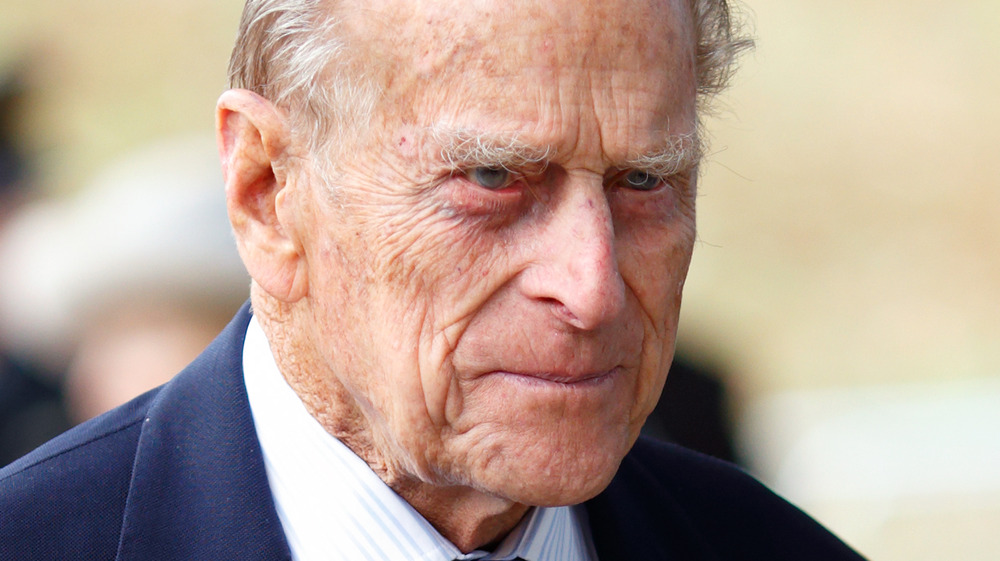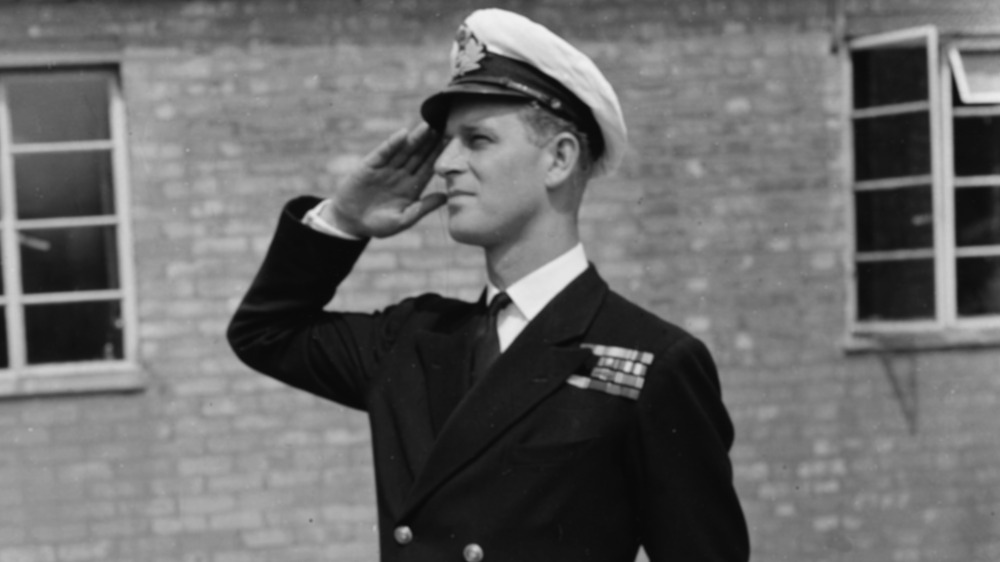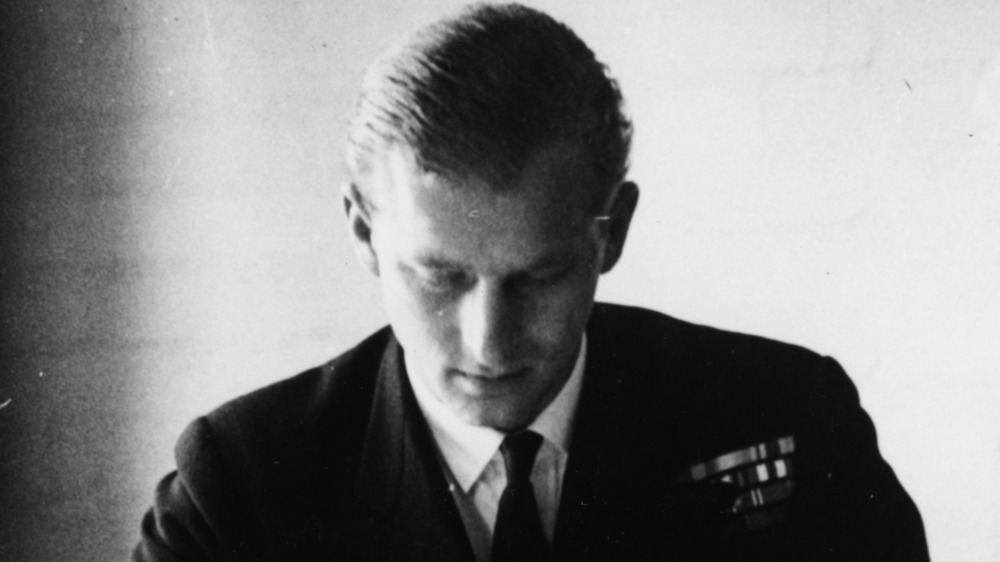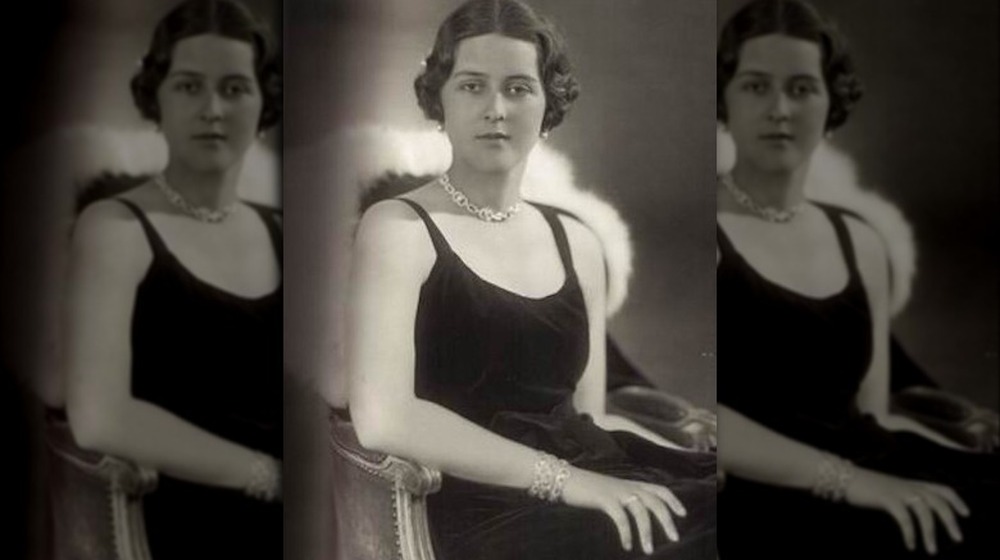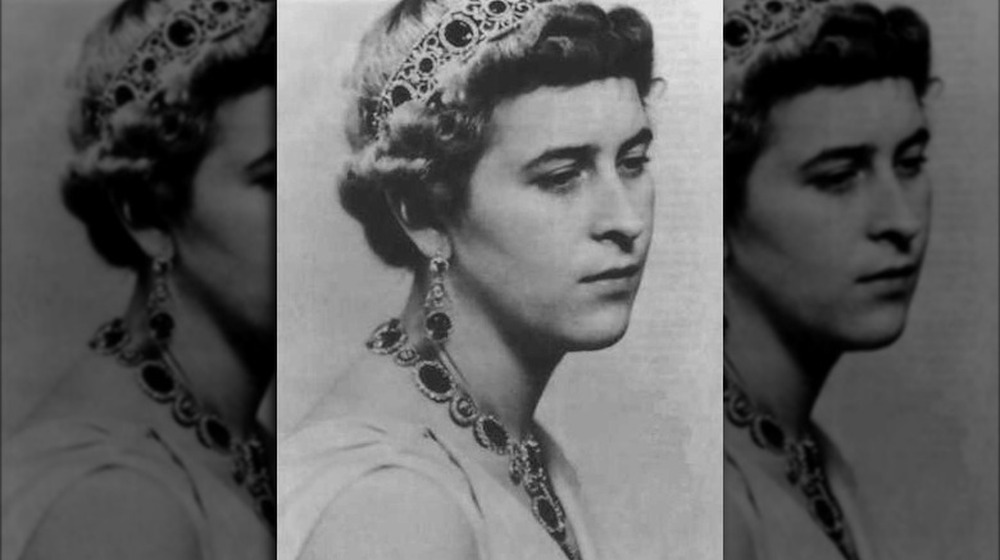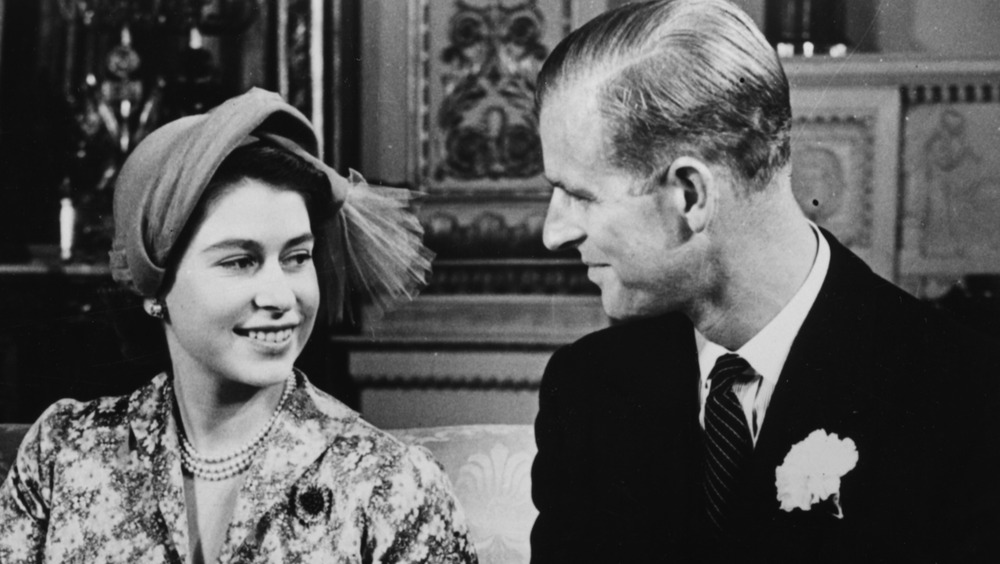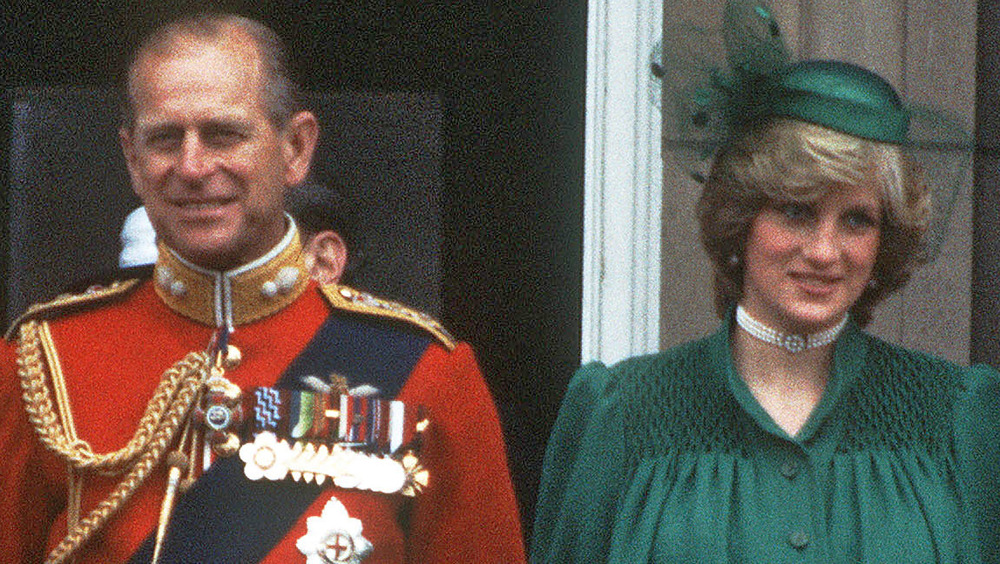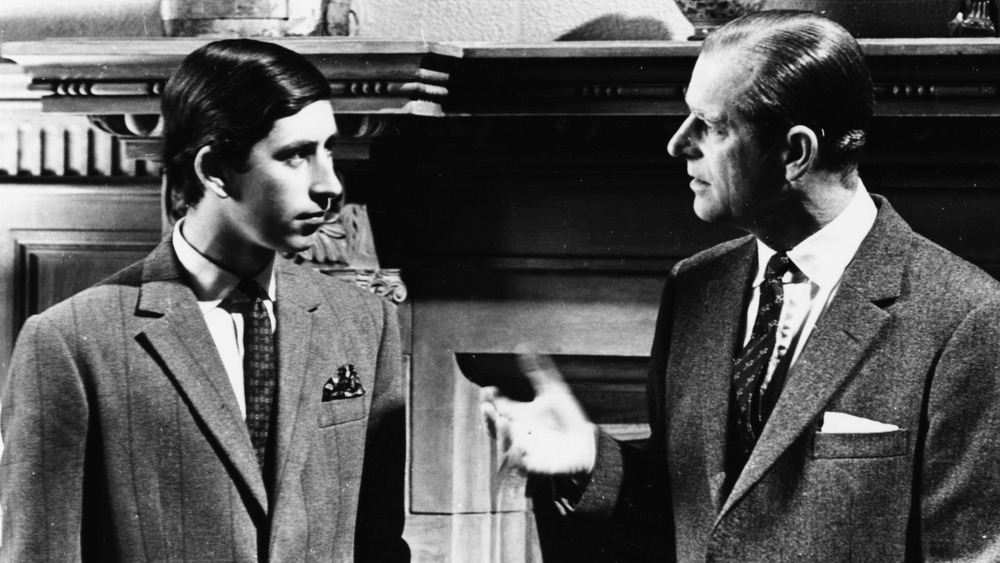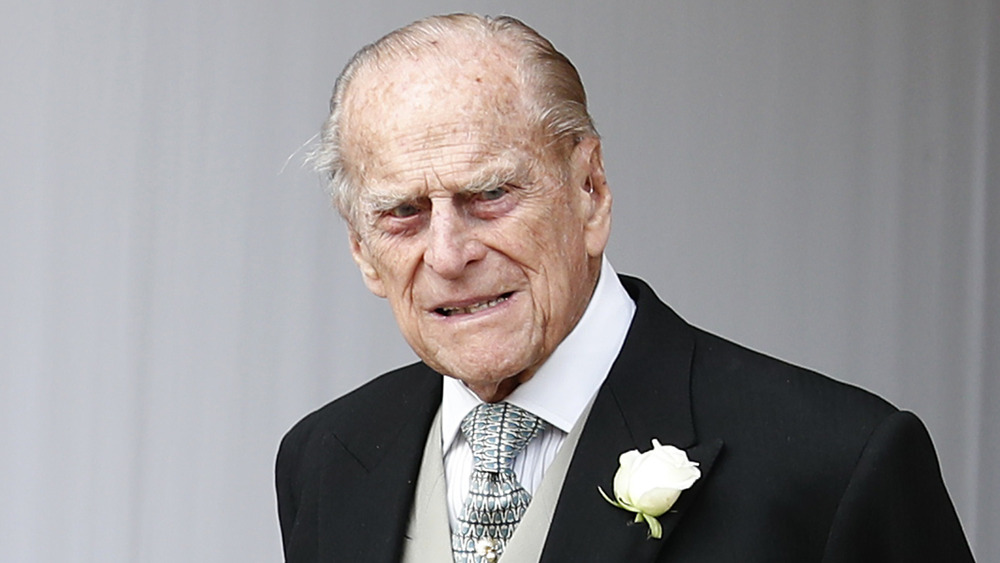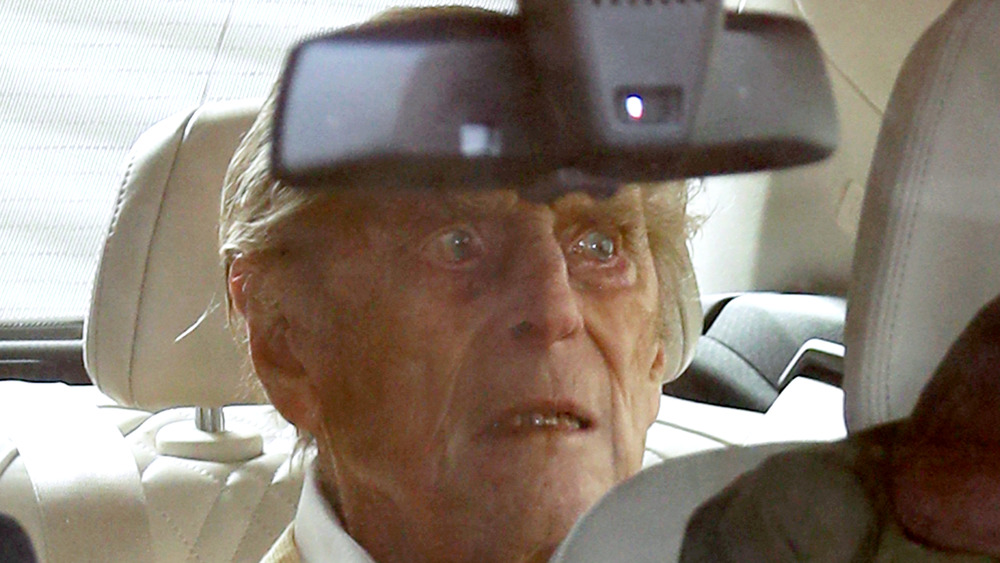Tragic Details About Prince Philip
Prince Philip had many titles with which he could be properly addressed. He was the Duke of Edinburgh, the Lord High Admiral of the United Kingdom, Personal Aide-de-Camp to Her Majesty, or His Royal Highness The Prince Philip. He was also just a guy, a guy with the real name of Philip Mountbatten, who was born into one of Europe's royal families, and who later became part of another by choice when he married the future Queen Elizabeth II more than 70 years ago.
The father of Prince Charles and grandfather of Princes William and Harry has been close to or wielded great power, and he lived a life of privilege and luxury for certain, but that's only part of the story. He died on April 9, 2021, at home in Windsor Castle, having lived nearly a century, amid major political and social turmoil. Despite enjoying the great fortune of nearly 70 decades atop the royal family, Philip's life was also one beset with struggles, sadness, heartbreak, and trauma. Here's a deep dive into the worst and most devastating things ever experienced by Prince Philip of the United Kingdom.
Philip had to flee his homeland at a very young age
In 1947, and at the age of 26, Prince Philip married into the royal family of the United Kingdom. In adherence to old-school traditions amongst the powerful and elite ruling families of Europe, no commoner could marry the future queen of the British realm, and Philip was of suitable lineage and noble birth. Born in 1921, Philip hailed from the royal families of both Greece and Denmark, according to Town and Country, his birth taking place on the Greek island of Corfu. But in September 1922, scarcely a year after he'd celebrated his first birthday, Philip and his family had to leave Greece, and urgently.
After a major military defeat, Philip's uncle, King Constantine of Greece, took the blame, and under pressure from a powerful anti-monarch coalition of "Western Allies, he abdicated the throne, according to Britannica. Philip's father, Prince Andrew, who served in Greece's military under Constantine, per Town and Country, was accused of treason, and was banished from Greece. The family fled to France via a British naval ship, where baby Philip was reportedly safely smuggled in a fruit crate, according to The Independent.
Prince Philip was left on his own as a child
While his family found physical safety and refuge outside of its Greek homeland, the late Prince Philip's childhood was fraught with separation, disaster, sadness, and instability. While in exile in France, Philip's mother, Princess Alice of Battenberg, experienced a deep spiritual shift, converting to the Greek Orthodox faith and becoming an extremely religious person. By 1930, according to CNN, her family equated her spiritual fervor to a mental illness, possibly schizophrenia, and forced her into a sanatorium in Switzerland where she was personally cared for by the famed Sigmund Freud. According to The Psychologist, Freud diagnosed Alice's religious mindset as a symptom of "sexual frustration," and he kept her institutionalized for over two years, despite her insistence that she was not, in fact, insane.
Around the same time that his wife was sent away Philip's father, Prince Andrew, took the opportunity to abscond with a lover to the luxurious South of France. He essentially abandoned his son, and various relatives around Europe took in Philip over the years, seeing to his health and education, primarily at boarding schools, per Philip Eade's book, Young Prince Philip: His Turbulent Early Life (via The Telegraph). As an example of Philip's own awareness of his turbulent family life, Eade's noted how when an interviewer asked an adult Philip what language he spoke at home growing up his, frankly, heartbreaking retort was, "What do you mean, 'at home'?"
A plane crash killed Prince Philip's sister
Along with his parents, a then-infant Prince Philip fled Greece during a 1922 anti-monarchical uprising with his four older sisters, Margarita, Theodora, Sophie, and Cecilie (pictured above). The latter was much older than Philip, and in 1931, when he was 10 years old, she married Georg Donatus, a German grand duke, according to Salon Privé. In November 1937, Cecilie boarded a plane to travel to the London wedding of Prince Ludwig (her husband's brother).
Conditions became dangerous along the way. The pilot decided to make an emergency landing in Belgium, and after thick fog made a stop in Brussels impossible, he aimed to touch down at an airport near Ostend instead. The fog was so dense that the pilot didn't see the chimney of a factory, and it clipped a wing. The plane quickly caught fire and then crashed. All 11 people onboard died during the disaster, including Cecile, her husband, and two of their three children. Per Philip Eade's book, Young Prince Philip: His Turbulent Early Life (via The Telegraph), Cecilie had been pregnant when she got on the aircraft, and investigators believe she gave birth mid-flight; the remains of her newborn infant were discovered amid the wreckage.
Prince Philip's sisters aligned themselves with Nazis
Europe isn't all that big of a place, and the royal families that ruled it for centuries are intricately and inexorably intertwined. This means that World War II pitted relatives against one another, some on the side of the Allies and some affiliated with Nazi Germany. As an active member of the British Royal Navy and future consort to the Queen of England, Prince Phillip was firmly a member of the anti-Hitler contingent. However ugly and unfortunate, three of his sisters explicitly sided with the Nazis.
According to The Independent, there are photos of Philip marching with Nazi officers in Germany in 1937 — at the funeral procession following the death of his sister, Cecilie and her husband, Georg Donates. Per Refinery29, the German aristocrat and his wife had joined up with the increasingly powerful and openly anti-Semitic Nazi Party earlier that year.
Princess Sophie was also a Nazi, at least through marriage. She married Prince Christoph von Hessen, who rose through party ranks to the position of Ministry of Air Forces under Hitler. Another of Philip's sisters, Margarita, married Gottfried, the Prince of Hohenlohe-Langenburg and a German army commander. The outlet also noted that "due to their connections with the Third Reich, Philip's sisters did not attend his wedding to Elizabeth in 1947."
Becoming a prince literally made Prince Philip sick
Philip Mountbatten married the future Queen Elizabeth II in 1947. At the time, she was still Princess Elizabeth, but next in the line of succession, upon the death of her father. Her coronation came relatively quickly, when her father, King George VI, died in 1952. Ascending to the role of Queen's consort, Philip's life changed dramatically; most notably, he was required to give up his position in the British Royal Navy.
According to Bryan Kozlowski's Long Live the Queen! (via Marie Claire), his new, largely ceremonial, and ambiguous role of royal husband left him bored and despondent, and he once compared his state to that of "a bloody amoeba." While his wife struggled with the loss of her father and the tremendous duties of becoming the ruler of the British Empire at the relatively young age of 27, Prince Philip took to moping about Buckingham Palace, prone to fits of anger and sadness. His lack of mental wellbeing affected his physical health, too. Within a year of Queen Elizabeth II's crowning, Prince Philip developed a case of stress-related jaundice. It took three painful weeks of bed rest in a darkened room for him to fully recover.
Prince Philip was suspected of murdering Princess Diana
Prince Philip was probably the most famous person to marry into the royal family, a status he ceded in 1981 when the popular and charismatic Lady Diana Spencer became Princess Diana upon marrying Philip's eldest son, Prince Charles. Diana captured the world's attention and affection, a style icon and humanitarian, and it bummed out a great number of people when the couple divorced in 1996. It was a tragedy of international magnitude when Philip's former daughter-in-law (and her boyfriend, Dodi Fayed) died in August 1997 after her driver crashed their vehicle in a Paris tunnel in a high-speed avoidance of paparazzi.
The split between Charles and Diana had been so contentious, and the perception of the royal family's dislike of Diana so strong, that conspiracy theories almost immediately began to spread, suggesting that Diana's death was somehow orchestrated. According to the BBC, one major perpetuator of these notions was Fayed's father, billionaire businessman Mohamed Al Fayed, who asked for and received an inquest from the U.K. government specifically investigating whether or not Prince Philip ordered Diana's death. In 2008, six months after the investigation began, a jury and a court found no evidence that the Duke of Edinburgh demanded Diana's death, or conspired with some government agency to pull it off.
Prince Philip and Prince Charles didn't have the warmest relationship
As Prince Philip had a relationship with his father that, at times, was characterized by difficulty and distance, his connection to his oldest son, Prince Charles, was also strained, tough, and complicated. According to the Daily Mail, Philip was a decidedly hands-off father. He wasn't privy to the boy's birth (he went and played squash instead), and he was around to celebrate "just two of [Charles'] first eight birthdays."
Philip preferred to be overseas, living the British Royal Navy life and being gone from home and family for long stretches of time. He wasn't an outwardly affectionate father, but when he did spend time with his son, it was to train him in manly pursuits, including "physical training and boxing." Philip reportedly taught Charles to swim by tossing him into the Buckingham Palace pool. Philip also insisted that Charles attend Gordonstoun, the same boarding school where he'd studied. According to Vanity Fair, Charles hated the strict and tough school, comparing his time there to a "prison sentence."
Father and son were apparently very different, and that led to a consistent disconnect, which Philip apparently acknowledged in 2004. "Charles is a romantic — and I am a pragmatist," he said (via Express). "That means we do see things differently. And because I don't see things as a romantic would, I am unfeeling."
Prince Philip endured a lot of health issues
As he approached his nineties, Prince Philip's health began to deteriorate. From the 2000s to the 2020s, the royal consort has been frequently hospitalized with serious medical issues. In April 2008, he was admitted to King Edward VII's Hospital in London to treat a chest infection, per the BBC. He recovered quickly, but later that year, the rumors and reports that the then-86-year-old Philip had been diagnosed with prostate cancer were so strong that Buckingham Palace issued a rare statement denying it. A few months later, in January 2009, Philip suffered a back injury that was severe enough that it caused him to miss several official engagements, according to Royal Central.
On Dec. 23, 2011 (per the BBC), while celebrating Christmas at the royal family's Sandringham estate, Philip experienced "chest pains," and he was airlifted to a Cambridgeshire hospital, where doctors performed an angioplasty and installed a stent to treat a problematically blocked coronary. He spent Christmas and Boxing Day in a hospital bed, recovering. Just a couple of months after that, in early 2012, Philip again missed celebrations, this time his wife's Diamond Jubilee, commemorating the 60th anniversary of her taking the throne. The cause: a bladder infection, which he'd be hospitalized for a second time later that year. Another infection sent Philip back to King Edward VII's Hospital for five days in June 2017, per the BBC. Later that summer, the 96-year-old Philip officially retired from royal duties.
Prince Philip suffered additional medical concerns
Even after he retired to relieve himself of his many duties as a member of the royal family, Prince Philip continued to suffer from various health and medical problems. After his notable absence at a 2018 Easter religious service and other Windsor Castle events, according to the BBC, Buckingham Palace revealed that Philip had been convalescing in King Edward VII's Hospital for 10 days following a hip replacement surgery, a complicated procedure from which full recovery can take months. And then in December 2019, the 98-year-old Philip spent four days at King Edward VII's Hospital to treat what the Independent called a "pre-existing condition" following a fall and a respiratory illness.
In February 2021 Philip returned to that same London medical center, because of what Buckingham Palace (via the BBC) called a "precautionary measure," later confirmed to be an infection. Two weeks after his admission, according to CNN, he was transferred via ambulance to a different hospital for additional treatment of the infection as well as a pre-existing heart issue.
On April 9, 2021, the royal family announced the death of Prince Philip, reporting that he "passed away peacefully this morning at Windsor Castle." The announcement added, "The Royal Family join with people around the world in mourning his loss."

